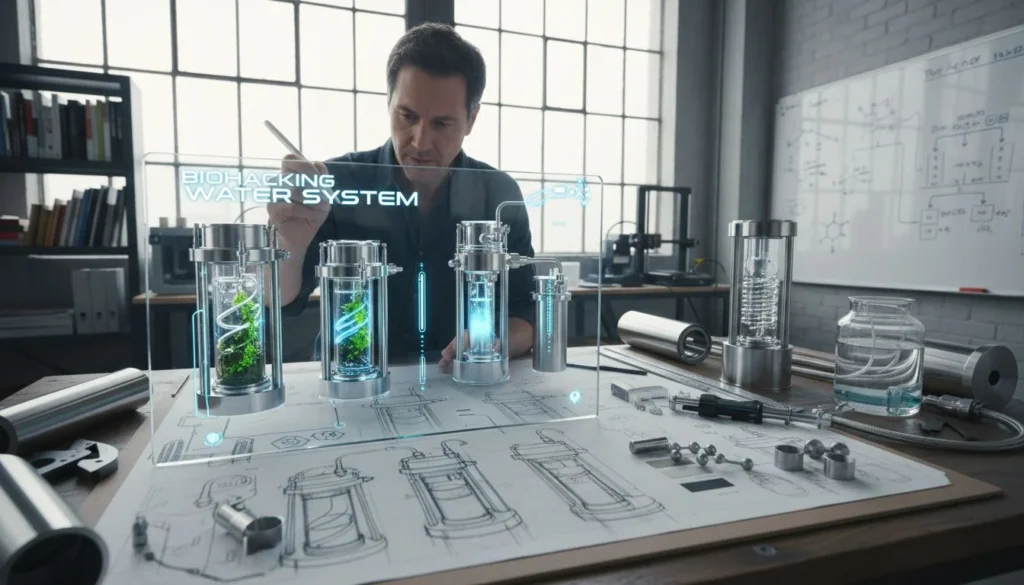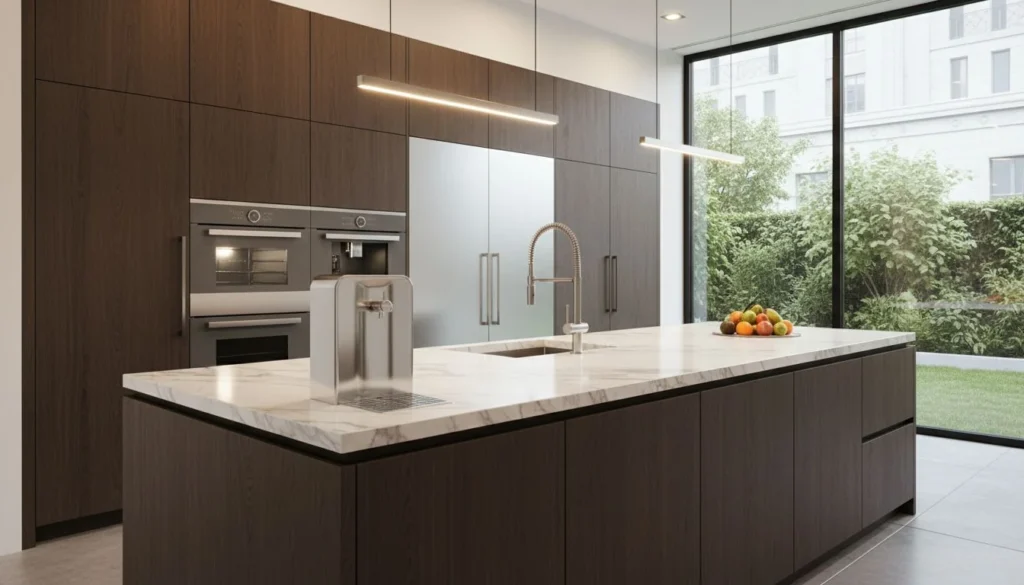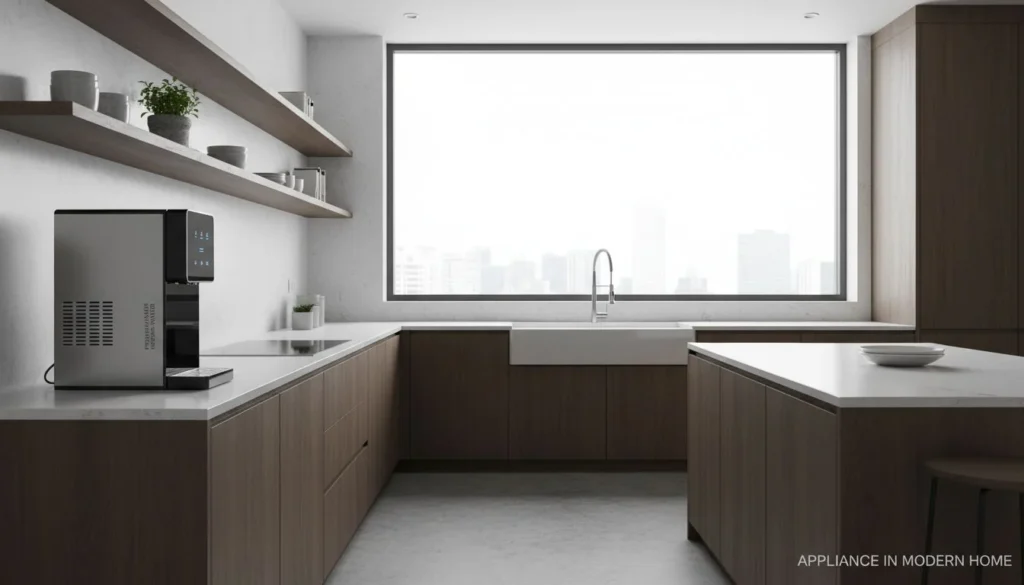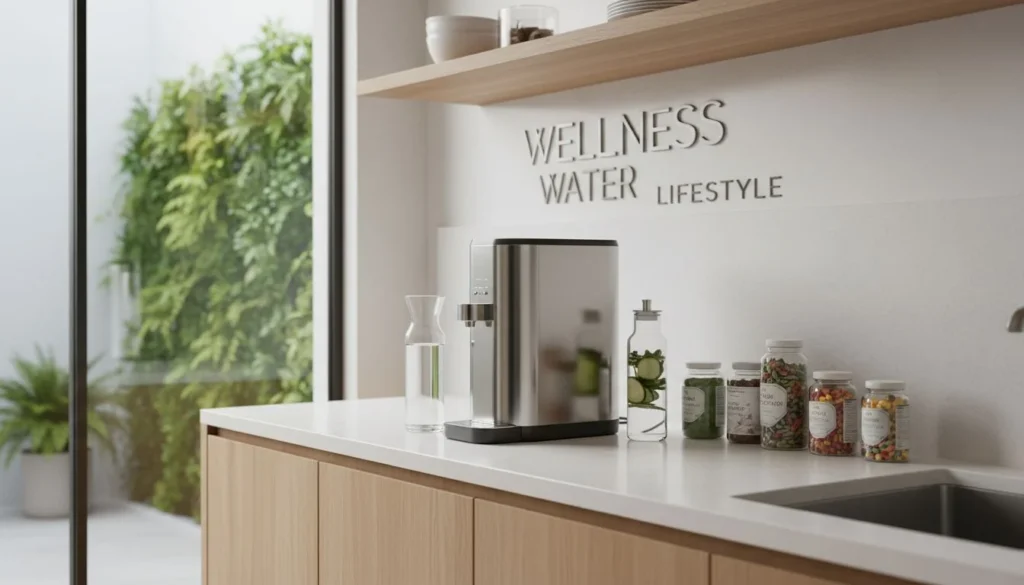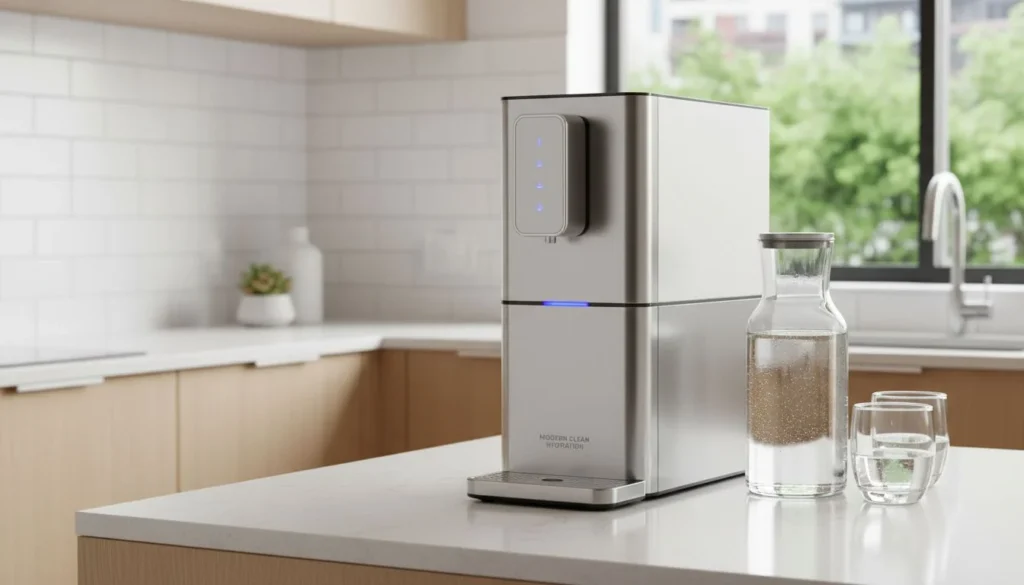
Já alguma vez pensou no quanto dependemos do ar puro? Quando embarquei na minha viagem no negócio dos purificadores de ar, descobri que não se trata apenas de vender um produto; trata-se de melhorar vidas.
Para lançar com êxito uma empresa de purificadores de ar, comece por efetuar uma pesquisa de mercado abrangente para identificar lacunas e oportunidades. Colabore com fabricantes experientes, concentre-se na inovação do produto e elabore um plano de marketing estratégico direcionado para nichos de mercado.
Embora estes passos iniciais estabeleçam uma base sólida, as secções seguintes exploram estratégias essenciais para a construção da marca, desenvolvimento de produtos e planeamento financeiro que ajudarão a garantir o sucesso a longo prazo na indústria da purificação do ar.
O estudo de mercado é crucial para lançar uma empresa de purificadores de ar.Verdadeiro
Os estudos de mercado identificam oportunidades e lacunas, orientando a estratégia.
Como pode identificar oportunidades de mercado no sector dos purificadores de ar?
A descoberta de oportunidades de mercado no sector dos purificadores de ar requer investigação estratégica e pensamento inovador.
Identificar oportunidades de mercado, analisando as tendências actuais, avaliando as necessidades dos consumidores e examinando os avanços tecnológicos. Colaborar com especialistas do sector para obter informações e explorar as lacunas do mercado.

Compreender as tendências do mercado
Para identificar oportunidades, comece por analisar tendências actuais1 no mercado dos purificadores de ar. Considere factores como o aumento da urbanização, a crescente consciência da saúde e a crescente sensibilização para a poluição do ar. Estas tendências podem indicar áreas com procura não satisfeita ou mercados emergentes que podem beneficiar de soluções de purificação do ar.
Avaliação das necessidades dos consumidores
Avaliar as necessidades dos consumidores é crucial. Realize inquéritos ou grupos de discussão para recolher dados sobre as caraterísticas que os consumidores mais valorizam nos purificadores de ar - tais como CADR (taxa de fornecimento de ar limpo), nível de ruído e PM2.5 sensores. Esta informação pode ajudar a adaptar os produtos a necessidades específicas, captando assim um segmento específico do mercado.
Avanços tecnológicos
Mantenha-se atualizado com os avanços tecnológicos no sector. Por exemplo, inovações como sensores inteligentes ou modelos energeticamente eficientes podem proporcionar uma vantagem competitiva. Pesquisa tecnologias inovadoras2 que estão a transformar a indústria e considerar a forma como estas podem ser integradas nas suas ofertas de produtos.
Colaborar com especialistas do sector
Contactar especialistas do sector para obter informações sobre as lacunas do mercado. Um fabricante fiável e experiente pode fornecer informações valiosas sobre a dinâmica da cadeia de abastecimento e potenciais nichos no mercado. Consulta de peritos3 ajuda a aperfeiçoar a sua estratégia empresarial, tirando partido dos seus conhecimentos e experiência.
Análise das lacunas do mercado
Efetuar uma análise exaustiva para encontrar lacunas entre a oferta e a procura. Identificar regiões ou grupos demográficos mal servidos que possam beneficiar de soluções de purificação do ar. Considerar factores como os índices de qualidade do ar em várias áreas e políticas regulamentares que possam afetar a procura.
Teste piloto com MVP
Por fim, considere o lançamento de um Produto Mínimo Viável (MVP) para testar a reação do mercado. Uma pequena encomenda experimental pode fornecer um feedback crítico, ajudando-o a compreender as preferências dos consumidores e a afinar o seu produto antes de um lançamento em grande escala.
A urbanização impulsiona a procura de purificadores de ar.Verdadeiro
O aumento da urbanização conduz a níveis de poluição mais elevados, impulsionando as vendas de purificadores de ar.
O nível de ruído é a principal preocupação dos consumidores relativamente aos purificadores de ar.Falso
Os consumidores dão prioridade à taxa de fornecimento de ar limpo em relação ao nível de ruído nos purificadores de ar.
Quais são as principais caraterísticas a ter em conta na conceção de purificadores de ar?
A conceção de um purificador de ar eficaz exige uma atenção especial às caraterísticas essenciais para garantir um desempenho ótimo e a satisfação do utilizador.
Ao conceber purificadores de ar, concentre-se em caraterísticas-chave como CADRe sensores inteligentes para melhorar a eficiência e a experiência do utilizador.
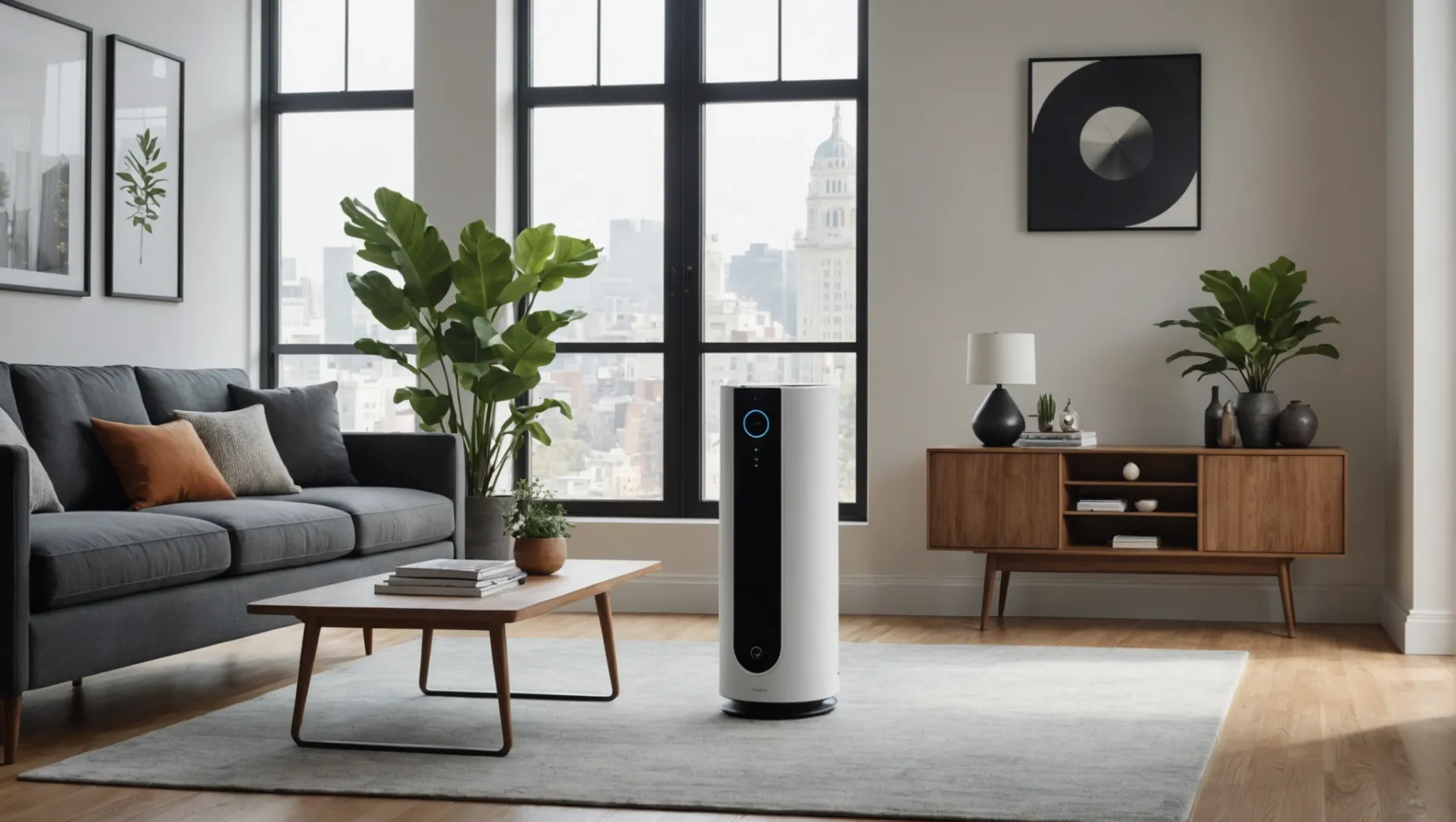
Compreensão CADR e a sua importância
A taxa de fornecimento de ar limpo (CADR) é uma métrica crítica que indica a eficácia com que um purificador de ar limpa o ar num espaço específico. Mede o volume de ar limpo produzido por minuto, sendo que valores mais elevados significam um melhor desempenho. Para satisfazer as expectativas dos consumidores, selecione um CADR classificação4 adequado ao tamanho da sala.
Níveis de ruído: Conseguir um funcionamento silencioso
O ruído pode ter um impacto significativo na satisfação do utilizador. Os consumidores preferem frequentemente dispositivos que funcionem silenciosamente, especialmente em quartos ou escritórios. Procure obter níveis de ruído inferiores a 50 decibéis para garantir que o purificador não perturba as actividades diárias ou o sono.
Integração de sensores inteligentes
Sensores inteligentes, tais como PM2.5 estão a tornar-se cada vez mais populares devido à sua capacidade de detetar partículas e ajustar automaticamente as definições de purificação. Estes sensores aumentam a comodidade do utilizador e garantem que o dispositivo funciona de forma eficiente, respondendo às condições de qualidade do ar em tempo real.
Eficiência energética: Uma abordagem sustentável
A incorporação de tecnologias energeticamente eficientes não só é responsável do ponto de vista ambiental, como também é apelativa para os consumidores conscientes dos custos. Procure certificações de eficiência energética para garantir aos compradores facturas de serviços públicos mais baixas e um impacto ambiental reduzido.
Considerações sobre a conceção estética e funcional
Um purificador de ar bem concebido deve integrar-se perfeitamente no seu ambiente e ser fácil de utilizar. Considere designs elegantes com controlos intuitivos e opções de personalização para satisfazer as diversas preferências dos consumidores.
Fiabilidade e durabilidade do edifício
Os consumidores procuram produtos que ofereçam longevidade e desempenho consistente. Dê prioridade a materiais de alta qualidade e a técnicas de construção robustas. A oferta de garantias também pode aumentar a confiança do consumidor na fiabilidade do produto.
Ao centrarem-se nestas caraterísticas, os designers podem criar purificadores de ar que satisfazem as exigências de um mercado exigente, assegurando tanto a funcionalidade como a satisfação do utilizador.
Os purificadores de ar devem ter um CADR superior a 200.Falso
O CADR deve corresponder ao tamanho da sala, não necessariamente acima de 200.
Sensores inteligentes ajustam os purificadores de ar com base na qualidade do ar.Verdadeiro
Os sensores inteligentes detectam partículas e ajustam as definições automaticamente.
Como escolher o fabricante certo para o seu negócio de purificadores de ar?
A seleção do fabricante perfeito é crucial para o sucesso da sua empresa de purificadores de ar.
Comece por avaliar os fabricantes com base na sua experiência, reputação e qualidade do produto. Considere factores como a capacidade de produção, a conformidade com as normas da indústria e a sua capacidade de inovação. Uma parceria estratégica com o fabricante certo pode ter um impacto significativo no crescimento e na sustentabilidade da sua empresa.

Avaliar a experiência e a reputação do fabricante
Ao escolher um fabricante para a sua empresa de purificadores de ar, comece por avaliar a sua experiência no sector5. Um fabricante com um historial sólido tem mais probabilidades de produzir produtos de alta qualidade e de cumprir as normas da indústria. A reputação pode ser avaliada através de críticas, testemunhos e estudos de caso de clientes anteriores.
Avaliação da qualidade e da inovação dos produtos
A qualidade dos purificadores de ar produzidos por um fabricante não é negociável. Solicite amostras para testar parâmetros como CADR (taxa de fornecimento de ar limpo), níveis de ruído e PM2.5 precisão do sensor. Além disso, investigue se o fabricante tem um historial de inovação e se está a investir em I&D para se manter à frente dos tendências tecnológicas6 na purificação do ar.
| Critérios | Descrição | Importância |
|---|---|---|
| CADR | Mede o volume de ar limpo fornecido por minuto. | Elevado |
| Nível de ruído | Indica o silêncio com que o dispositivo funciona. | Médio |
| PM2.5 Sensor | Detecta partículas finas para avaliação da qualidade do ar. | Elevado |
Garantir a conformidade com as normas da indústria
A conformidade com normas internacionais, como a ISO ou a AHAM, pode ser um fator distintivo na seleção de um fabricante. Estas certificações garantem que os produtos cumprem os padrões de segurança e desempenho. Certifique-se de que o seu potencial parceiro de fabrico cumpre estas normas.
Compreender a capacidade de produção e a flexibilidade
Analise se a capacidade de produção do fabricante está de acordo com as suas necessidades comerciais. Isto inclui a sua capacidade de aumentar a produção durante picos de procura. A flexibilidade também é crucial; considere se eles podem acomodar designs personalizados ou modificações com base no feedback do cliente.
Criação de parcerias estratégicas
O fabricante ideal deve ser visto como um parceiro estratégico e não apenas como um fornecedor. A sua visão do mercado da purificação do ar pode ser inestimável, fornecendo orientação sobre as tendências emergentes e ajudando-o a aperfeiçoar a sua oferta de produtos para melhor satisfazer as necessidades dos clientes.
A reputação de um fabricante é avaliada através de críticas.Verdadeiro
As críticas, os testemunhos e os estudos de casos ajudam a avaliar a reputação.
A certificação ISO é irrelevante para os fabricantes de purificadores de ar.Falso
A ISO garante o cumprimento das normas de segurança e desempenho.
Que estratégias de marketing eficazes podem impulsionar a sua marca de purificador de ar?
Para se destacar no competitivo mercado dos purificadores de ar, são necessárias estratégias de marketing inovadoras e direcionadas.
Impulsionar a marca do seu purificador de ar envolve alavancar o marketing digital, envolver-se com públicos de nicho e enfatizar as caraterísticas únicas do produto. Estas estratégias ajudam a diferenciar a sua marca num mercado concorrido e a atrair clientes fiéis.

Compreender o seu público-alvo
Para comercializar eficazmente a sua marca de purificador de ar, comece por identificar quem são os seus clientes ideais. São pessoas preocupadas com a saúde, pais ou millennials com conhecimentos tecnológicos? Realize inquéritos e utilize a análise de dados para compreender as suas preferências e comportamentos. Adaptar as suas mensagens de marketing para que ressoem com estes grupos pode aumentar significativamente o atrativo da sua marca.
Tirar partido dos canais de marketing digital
Na era digital, é fundamental ter uma presença sólida em linha. Utilize otimização de motores de busca7 (SEO) para melhorar a visibilidade do seu sítio Web nos motores de busca. Invista em publicidade pay-per-click para alcançar potenciais clientes que procuram ativamente purificadores de ar. As plataformas de redes sociais, como o Instagram e o Facebook, oferecem excelentes oportunidades para apresentar os seus produtos através de conteúdos e promoções interessantes. Colabore com influenciadores que possam promover autenticamente a sua marca junto dos seus seguidores.
Concentre-se nas caraterísticas únicas do produto
Diferencie a sua marca realçando as caraterísticas únicas dos seus purificadores de ar. Quer se trate de tecnologia de filtragem avançada, baixos níveis de ruído ou eficiência energética, realce estas vantagens nas suas campanhas de marketing. Crie conteúdo informativo, como gráficos comparativos8 e vídeos que mostrem como os seus produtos se distinguem dos da concorrência.
Envolver-se em nichos de mercado
Visar nichos de mercado, compreendendo as necessidades específicas de segmentos mais pequenos de um mercado maior. Por exemplo, desenvolva campanhas especificamente para quem sofre de alergias ou para donos de animais de estimação. Esta abordagem específica pode ajudá-lo a criar uma base de clientes fiéis que vêem a sua marca como uma solução personalizada para as suas necessidades únicas.
Utilizar o feedback dos clientes
Procure ativamente e utilize o feedback dos clientes para melhorar continuamente os seus produtos e serviços. Incentive as críticas e os testemunhos em plataformas como a Amazon e o Google. O feedback positivo pode ser uma ferramenta poderosa para criar confiança e credibilidade para a sua marca. Responder prontamente às dúvidas e reclamações dos clientes também demonstra o seu empenho na satisfação do cliente.
Desenvolver uma identidade de marca forte
Criar uma história e uma identidade de marca convincentes é essencial para a diferenciação. Certifique-se de que a sua marca é coerente em todos os canais, desde a embalagem do produto até às publicações nas redes sociais. Uma identidade de marca forte ajuda os consumidores a recordar os seus produtos e a associá-los à qualidade e fiabilidade.
A SEO melhora a visibilidade da marca do purificador de ar.Verdadeiro
A SEO melhora a presença online, atraindo mais potenciais clientes.
Ignorar nichos de mercado aumenta a fidelidade à marca.Falso
A orientação para nichos de mercado cria uma base de clientes fiéis.
Conclusão
Ao seguir estes passos estratégicos, pode posicionar o seu negócio de purificadores de ar para o sucesso. Mantenha-se inovador, responda às necessidades dos clientes e esteja atento às tendências do mercado para prosperar neste sector competitivo.
-
Explorar a dinâmica do mercado para detetar oportunidades emergentes..: O Mercado de Purificadores de Ar devera atingir 16,83 bilhoes de dolares em 2024 e crescer a um CAGR de 7% para atingir 23,60 bilhoes de dolares em 2029. Sharp Corporation, IQAir ... ↩
-
Descubra a tecnologia de ponta para melhorar as ofertas de produtos..: Utilizando o APART, uma aplicação patenteada de precipitação eletrostática, o Brio purifica o ar removendo e retendo partículas sem reduzir o fluxo de ar. APART ... ↩
-
Obter conhecimentos estratégicos para informar as decisões comerciais..: Consultar um perito garante que escolhe o purificador de ar HEPA adequado às suas necessidades específicas. Os peritos têm em conta vários factores. ↩
-
Compreender o papel da CADR na avaliação da eficácia do purificador de ar..: CADR, a Taxa de Entrega de Ar Limpo, é uma métrica que foi desenvolvida como uma forma de medir o desempenho dos purificadores de ar para casa. ↩
-
Compreender por que razão a experiência é importante para a garantia de qualidade e fiabilidade..: A investigação da Ecosystm conclui que a experiência na indústria pode ser um critério de seleção de fornecedores significativo para algumas áreas tecnológicas. ↩
-
Mantenha-se atualizado sobre as inovações para ofertas de produtos competitivos..: Tecnologia de purificação do ar UVGI -. A irradiação germicida ultravioleta (UVGI) é uma tecnologia de purificação do ar que desinfecta a atmosfera através da libertação de UV-C ... ↩
-
Aprenda técnicas de SEO eficazes para melhorar a visibilidade online..: A implementação das melhores práticas de SEO levou à melhoria das classificações de pesquisa para as principais palavras-chave da marca. As pesquisas por termos como "purificador de ar Aeris", ... ↩
-
Compreender como os gráficos de comparação podem realçar as vantagens do produto..: Isto permitir-lhe-á comparar um número (CFM) entre diferentes unidades e dar-lhe-á uma ideia muito melhor do poder de processamento real do purificador de ar. * ... ↩


